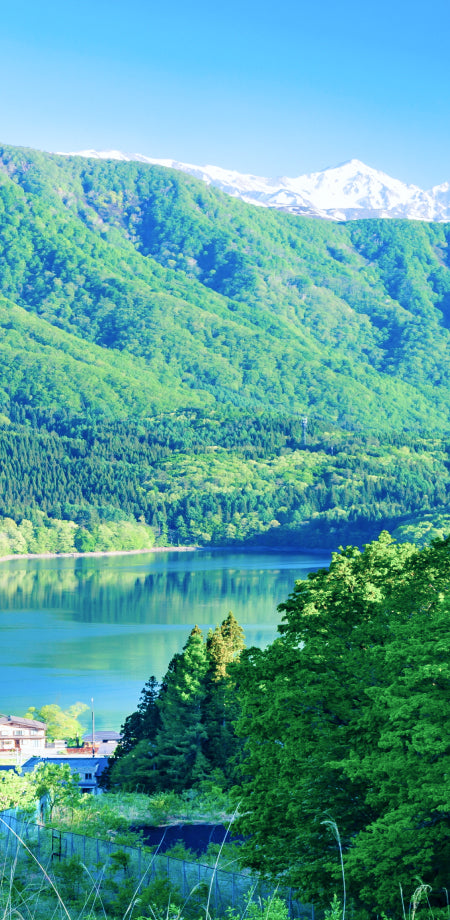投稿日:
更新日:
Discover the traditional flavors - exquisite vegetables you'll want to eat this summer
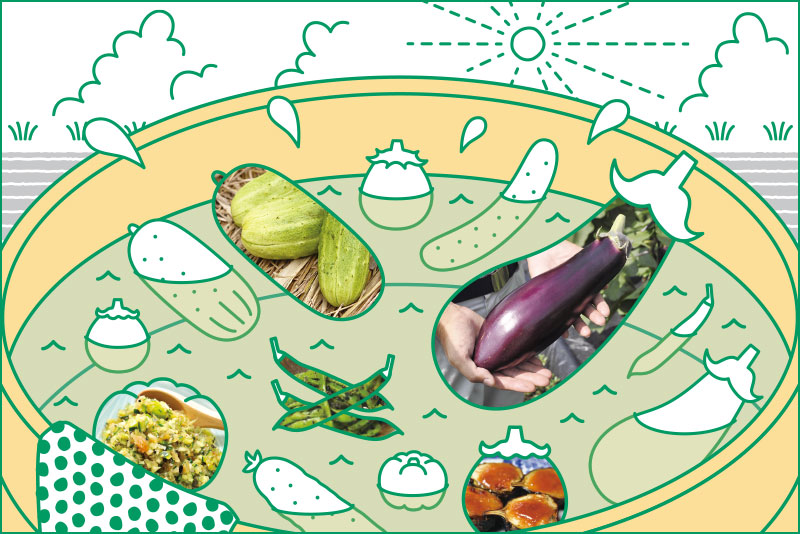
It's a delicious season for summer vegetables such as eggplant, tomatoes, and cucumbers. Vegetables that grow brightly in colour when exposed to the sun and are exposed to the sun, are also rich in nutrients such as potassium and vitamins, which are needed in the summer. Growns in a variety of terrains and climatesShinshuSome of the summer vegetables have been handed down only in the area, and some have a rare shape that says, "I've never seen anything like this!" Now in seasonShinshuHere are some delicious summer traditional vegetables.
The giant phantom foliage of Tenryu Village is nurtured by the climate of Tenryu Village
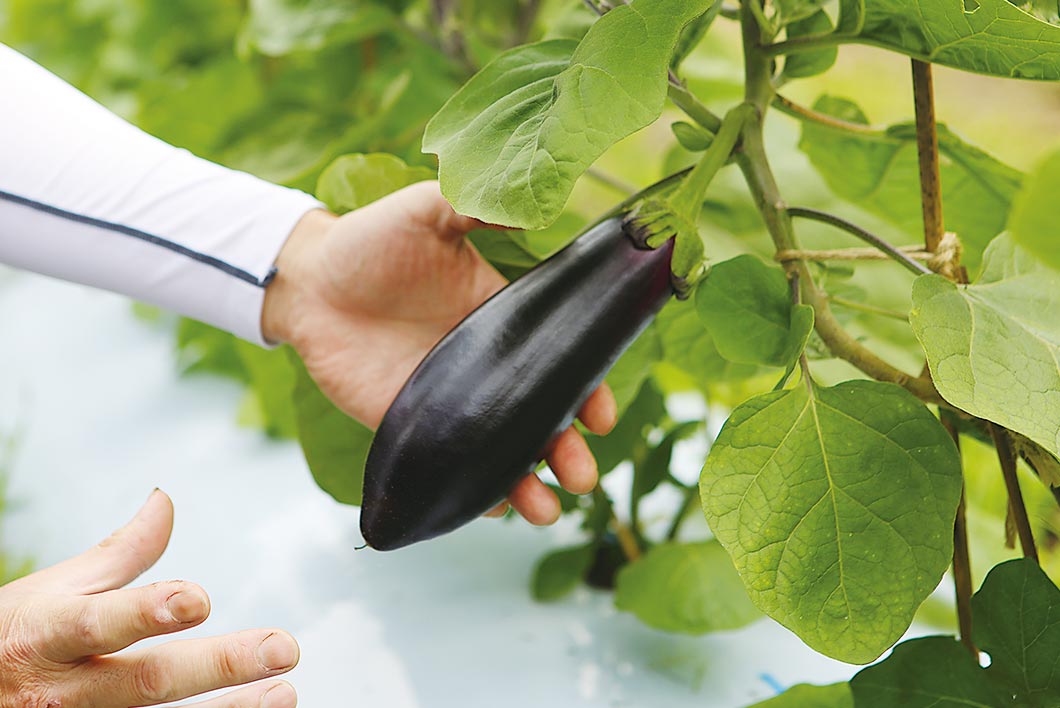
It originated in 1887 when Taizawa Hisakichi, a member of Kanbara Village (now the Tenryu Village Kanbara district), ordered seeds. It was named "Taizawanasu" after Taizawa's name, and it gradually became known as "Teizawanasu". The photo shows "teizanasu" which has been planted for about a month. It grows about 1cm each day.
Tenryu Village Teizanasu Producer Association
Notake Masataka and Itakura Takaki
As a result of pursuing productivity and efficiency in agriculture, vegetables with similar appearances in the same color and shape can now be purchased anywhere in Japan. On the other hand, there are many vegetables in the countryside that can only be grown in certain areas and have distinctive flavors and appearance. Efforts to reconsider the value of traditional vegetables that have been cultivated by the local climate and cultivated the local food culture, and to connect them to future generations are now beginning to spread. Nagano The prefecture has set up a list of items that meet certain criteria for "profile history," "food culture," and "variety characteristics."ShinshuIn 2006, a system was established to select the plant as a traditional vegetable. Currently, 79 varieties have been selected. Many production areas face issues of successors and productivity, but people's desire to "continue to this taste and pass it on to future generations," and gradually, we are beginning to see young people being added.
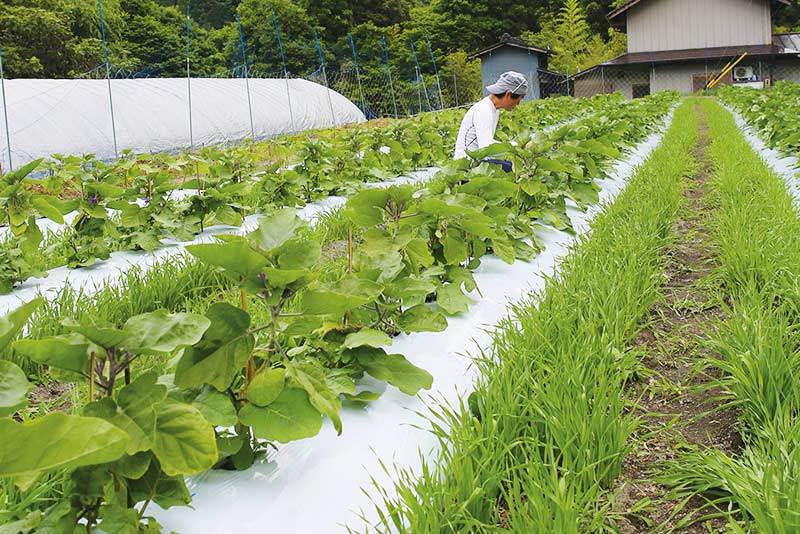
A field managed by Itakura.
One of these traditional vegetables, eggplants are also known as the "phantom giant eggplant" Nagano It is located in the southernmost village of the prefecture. Tenryu Village is rich in forest resources, with the Tenryu River flowing north and south in the middle of the village and surrounded by mountains on all sides. It was once the "Tenryo" of the Edo Shogunate, and was a timber producer.ShinshuUnusually, the village's pride in the traditional vegetable "teizanasu" is grown in this region with a warm climate that produces yuzu and tea leaves. Its biggest feature is its incredible size, weighing approximately 30cm long and weighing 600-700g. The harvest season is from July to October, but the taste of September is exceptional, as it matures and reaches a peak of heat, and is said to be exceptional.
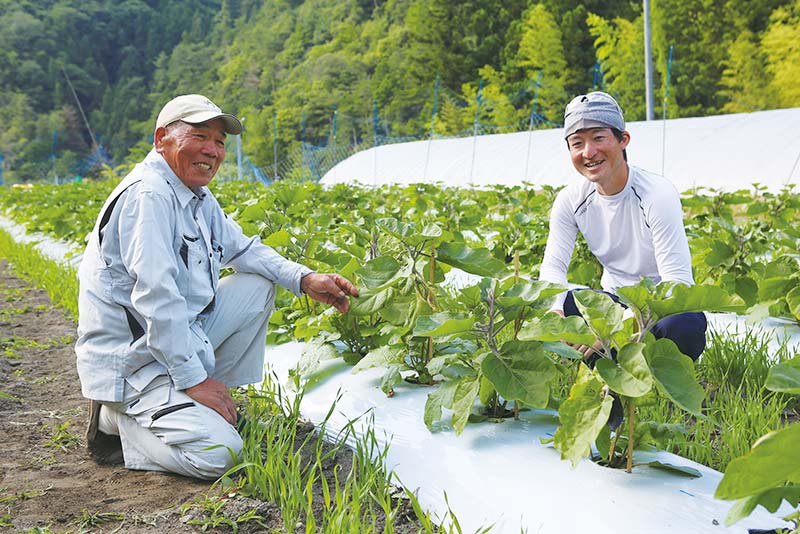
Notake Masataka (left), the head of the Tenryu Village Teizanasu Producers Association, and Itakura Takaki (right), the director and in charge of seeds. Teizanasu, a food that only a few people know about within the village, has grown to the point that it has produced approximately 14 tons, and has grown to the point where it was shipped outside the prefecture, including Tokyo's Toyosu Market.
この「ていざなす」の名を広め、地域の特産にしようと、2007年に発足したのが「天龍村ていざなす生産者組合」です。 Currently, 18 members are working to ensure stable production and cultivation techniques.
"We have tried to spread these delicious and visually impactful eggplants throughout the Iida and Shimoina region, and other regions have said that they would like to have these seedlings be given away, but they have not grown well in other places. In that case, we are working hard to make them a specialty that is unique to Tenryu Village," says union president Notake Masataka. Water is essential for cultivating Teizanasu, which requires a large amount of water so that it is necessary to sprinkle it with a special hose all night. The village apparently draws spring water from the mountains into the fields, which can be drunk.
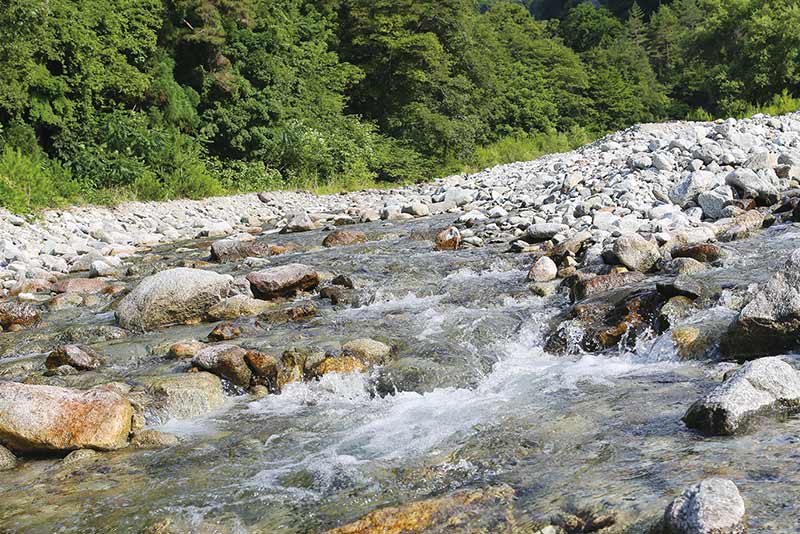
The Toyama River is a tributary of the Tenryu River. The agricultural water that nurtures "teizanasu" uses water that springs from the same source as this river.
Among producers who are aging each year, Notake is expected to be a "young hope" by Itakura Takaki, who serves as the union's director. He also serves as a representative of seedlings and manages the "teizanasu" seeds throughout the village.
Itakura began cultivating because he wanted to preserve the food culture and traditions of Teizanas, which the people he helped him have been working hard to cultivate when he made a U-turn from Aichi Prefecture to Tenryu Village.

In addition to grilled eggplants, we also recommend using eggplant skin as a bowl, taking advantage of the size of the "teizanasu". For more detailed recipes, see "Delicious"ShinshuCheck out "Fudo Net".
"Even though the farmland is in a mountainous area, it is a small area, but the unique advantage of Tenryu Village is that you can grow crops in a blessed natural environment, such as clean water and compost made from fallen leaves from the mountains, and we would like to protect this beautiful scenery through agriculture," says Itakura. When I asked how to eat it deliciously, he told me, "Teizanasum is ready for fried food." It is said that they are sliced into slices, sprinkled with potato starch, fried eggplant with dashi stock, and served with grated ginger.When a Michelin-starred chef visited the village previously, he said that he had refilled it many times because it was so delicious. A simple "yaki eggplant" is also recommended, as it contains plenty of moisture than regular eggplants, so it can be cooked in about 5 minutes, and on high heat it can be cooked in just 2-3 minutes, and is delicious to eat with heel soy sauce. Please try the traditional flavors that have been preserved as a village property for over 130 years.
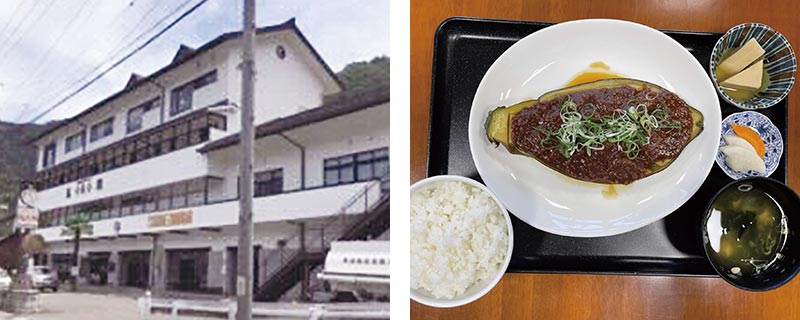
During the harvest period of Teizanas, you can always purchase it at the Fureai Station Ryusenkaku store, directly connected to JR Hiraoka Station, and the restaurant in the attached restaurant will offer Teizanas Set Meals for a limited time.
[Tenryu Village Teizanasu Producer Association (Secretariat: Tenryu Agricultural and Forestry Corporation)]
944-2 Hiraoka, Tenryu Village, Shimoina District TEL 0260-32-1160
INFORMATION Ginza NAGANO It will be on sale from July 20th
It's season now! Saku Kota Cucumbers boasting a texture and flavor
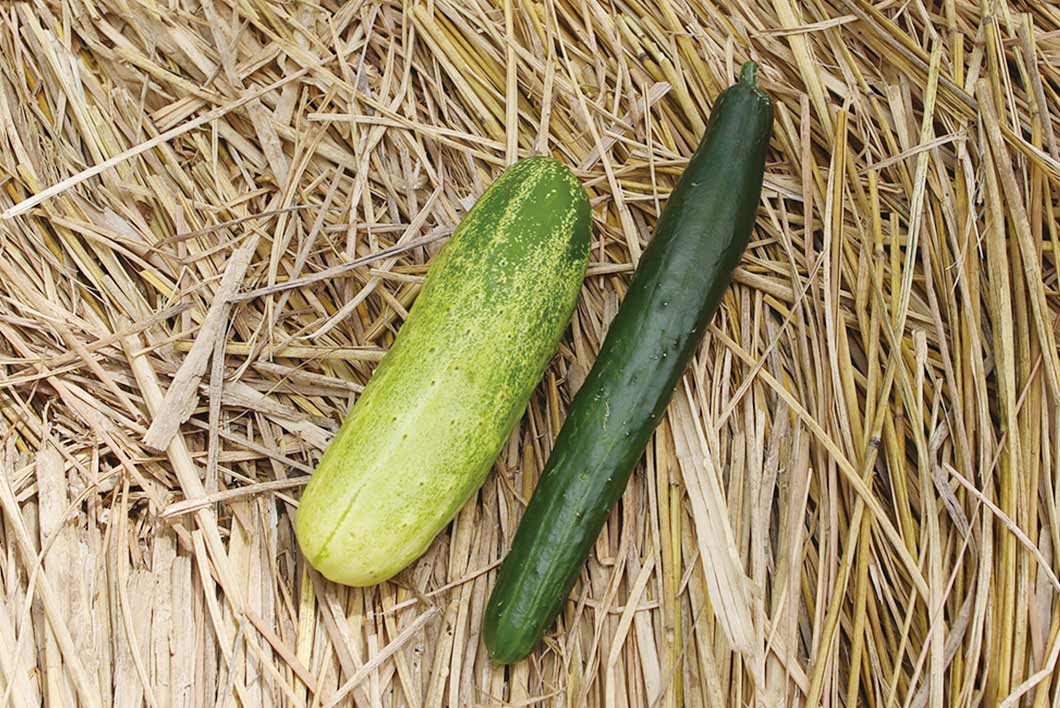
It is characterized by its thickness three times that of a regular cucumber. The producer named it the "tai" cucumber, which is "old" in "Saku", is called the "saku Kotai cucumber."
Saku Kota Cucumber Preservation Society
Kudo Masahiro and Takeuchi Ariichi
The cucumbers are crisp and crisp, surprisingly fresh, and have a slightly sweet taste, and are also expressed as the refreshing feeling of a young ayu. Nagano Located in the eastern part of the prefectureSaku CityIt has been cultivated for generations and is currently at the harvest season. Its name is "Kodai Cucumber." It has been cultivated in the Saku region since the 1940s, and is said to have originated from a teacher at the former Kitasaku Agricultural High School (now Sakuhei Technical High School) who brought this cucumber seeds, which have roots in Siberia, from somewhere.
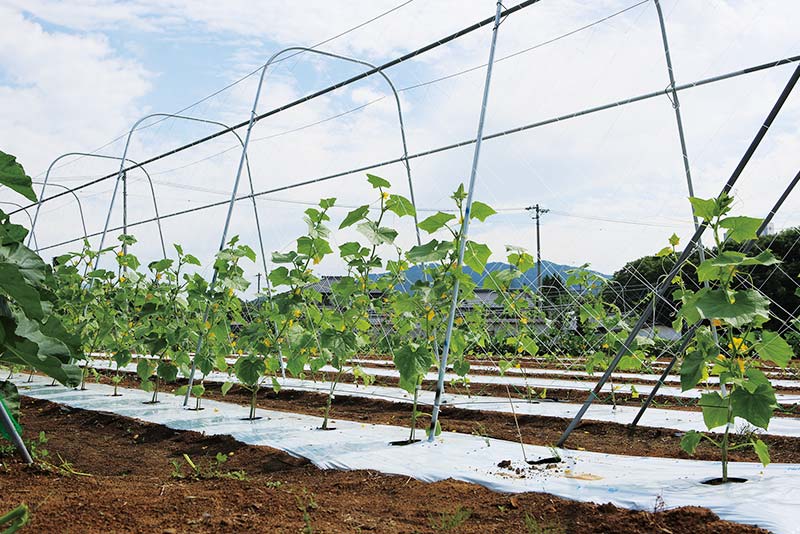
Takeuchi's cucumber field is well maintained.
In order to preserve and inherit these cucumbers and expand their use, the Saku Kota Cucumber Preservation Society was established in 2017. Currently, approximately 40 members are cultivated all over the city, and now it has grown to a production volume of about 14 pounds and about 3 tons.
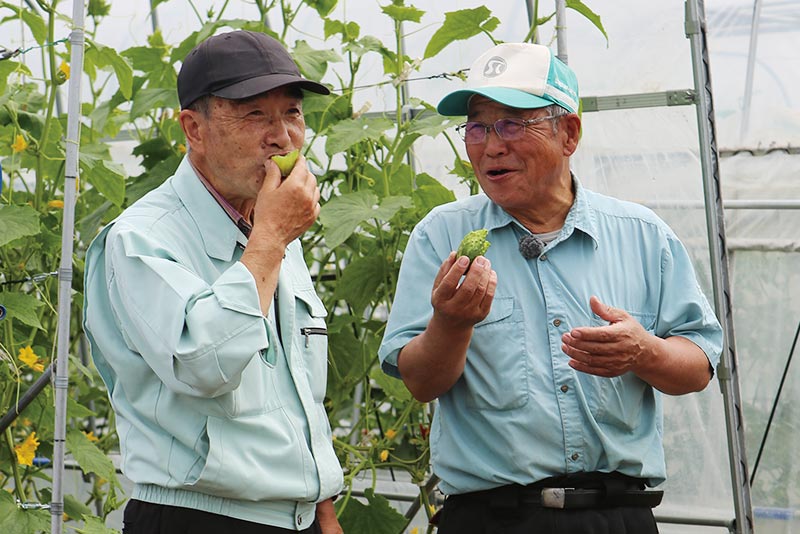
Kudo Masahiro (left) and Takeuchi Yuichi (right).
"It has been cultivated with the desire to protect the local treasures that have been cultivated by the title "Saku," says Takeuchi Yuichi, who has been cultivating "Saku Kota Cucumbers" for seven years. After retirement, I was introduced to this cucumber when I attended a seminar to start farming, and it started cultivation. Although I was about to give up on the small harvest despite the time-consuming effort, I almost gave up, but after repeated trial and error, I started growing only 10 seedlings, but now it has 160 of them in total, including 160 seedlings in open-air and house-grown, boasting one of the largest cultivation volumes among the preservation society.
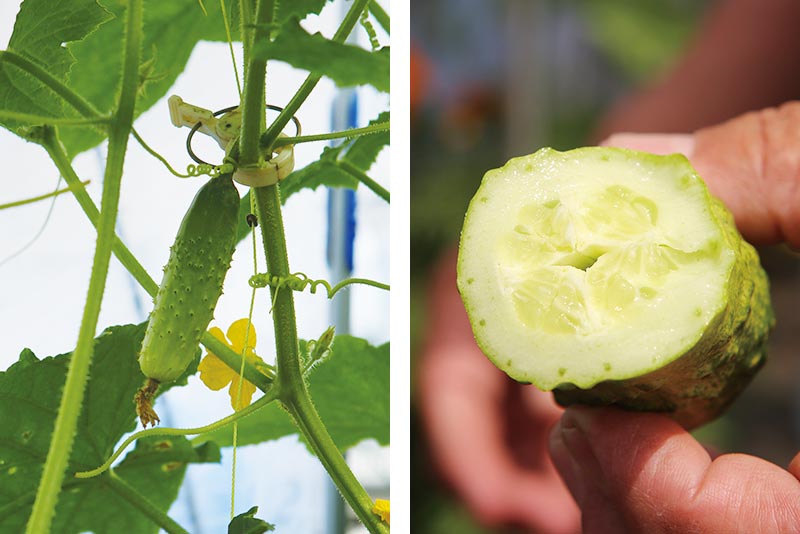
While regular cucumbers produce one fruit per verse, Saku Kota Cucumbers have a smaller yield, and some plants have more than three verses, with one in eight verses. During the harvest period (July to September), you can purchase it at roadside stations and vegetable direct sales outlets in the city.
In order to protect the "Saku Kota Cucumber," the chairman Kudo Masahiro is also a challenge to cultivate successors. One of these efforts is to collect seeds from high-quality plants to make it easier for the next player to grow, and the preservation society is also focusing on seed harvesting, such as cultivating seeds for seed harvesting in fields more than 2km away from other fields to prevent crossings. This method isShinshuHe heard about the method of seedling "teizanasu" at the Traditional Vegetable Production Area Exchange Meeting, and got an inspiration. Takeuchi is also keen to establish methods for cultivating high-quality species so that young people do not have to struggle.
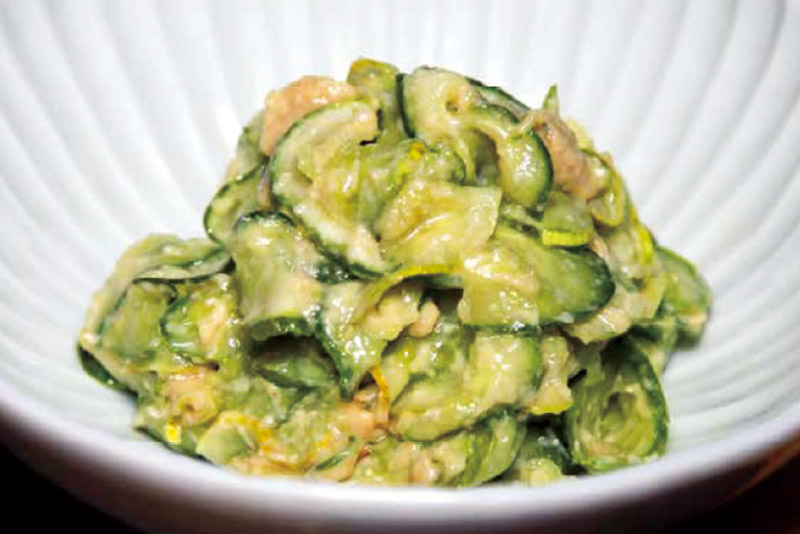
The classic "cucumber lees" is the best.
When I asked the two of them how to eat it, they said, "Are you sure it's lees?!" "Once upon a time, my mother made this all the time in the summer. At the time, I was tired of it and made me sad, but including that, it reminds me of the old days, and it's a nostalgic, mother-in-law flavor," says Kudo. Other recommended sweet stews are also said to be recommended. Why not enjoy the texture of the "Saku Kota Cucumber" that is currently in season?
[Saku Kota Cucumber Preservation Society (Secretariat:Saku CityAgricultural Production Promotion Section, Agricultural Policy Division, Agricultural Production Promotion Section]
Saku CityMedium 3056 TEL 0267-62-3203
https://www.city.saku.nagano.jp/
INFORMATION Ginza NAGANO It will be on sale from July 25th
I want to taste this summerShinshuTraditional vegetables
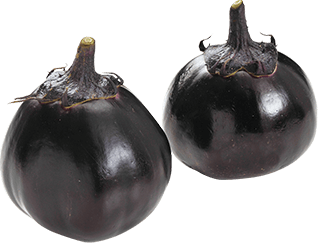
Obuse Marunasu(Obuse Town)
[Harvestment period: July-September]
A variety that has been cultivated mainly in the Hokushin region since the Meiji period. The meat is hard and hard, so it is less likely to fall apart, and it has a subtle sweet, distinctive flavor. Even today, during the Obon festival in Okushinano, a month later, "oyaki" made with obuse Marunasu is a must-have item for offerings to Buddhas and serving customers.
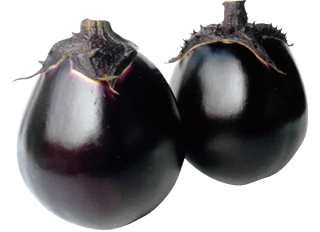
Komori Nasu(Nagano CityNanbu et al.)
[Harvestment period: July-September]
Nagano CityIt is known as the original species of Marunasu, originally from Shinonoi Tofukuji Temple, and was made at Zenkoji Temple, along with "Obuse Marunasu". It is characterized by a strong black purple navy blue, and the skin is very thin and delicate. It cooks quickly and melts in your mouth, making it perfect for dengaku.
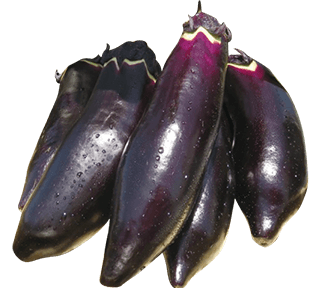
Shigekonasu(Takagi Village)
[Harvestment period: July-September]
It began cultivating it around 1955 by the father of Ikeda Shigeko, who lives in Takagi Village, Shimoina District. The tip of the fruit is pointed like a dolphin's mouth, with little bitterness, the skin and flesh are soft, and the texture melts in the mouth when eaten.
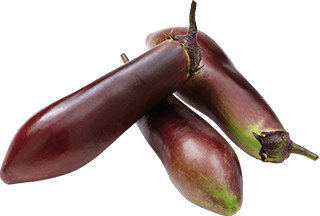
Suzugazawa Nasu(Anan Town)
[Harvestment period: late August to early October]
A large eggplant that was cultivated in the 1950s, mainly in the village of Wago Suzugasawa, located on the border between Anan Town, Shimoina County and Hiraya Village. It contains a lot of water, and in addition to grilling eggplants and stir-fried in oil, it is also eaten as a preserved food for the long winter period.
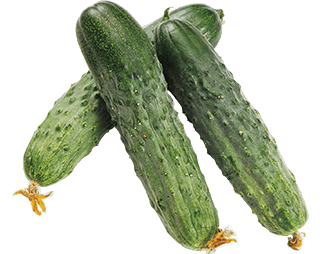
Yachimachi cucumber(Suzaka City)
[Harvestment period: Late June - September]
The skin is thin and the seeds are short, short, cucumbers with a small shaped shaped look. The foods that were picked early for raw food around the 1940s wereNagano CityIt was served as "moromi cucumbers" at high-class restaurants around Zenkoji Temple, and is also used as light pickles, miso pickles, and tsukudani.
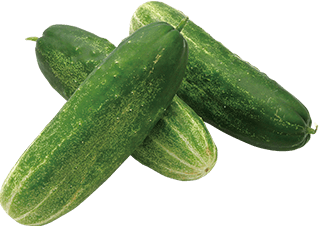
Suzugazawa(Anan Town)
[Harvestment period: July-September]
Like Suzugasawa Eggplant, this slightly thick white wart is grown mainly in the Wago Suzugasawa village. The fruit is about 15-18cm long, with little bitterness in the skin, and although the flesh is thick, it is soft and fresh. In addition to being eaten raw, it is also eaten as pickles such as lees, vinegared, and lightly pickled vegetables.
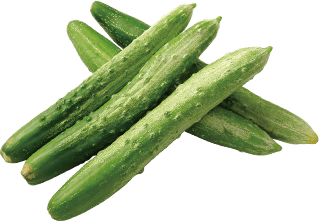
Kiyonaiji cucumber(Kiyonaiji, Achi Village)
[Harvestment period: mid-July to late August]
Cucumbers are harvested in summer and autumn, mainly harvested after Bon Festival. Because it is long at 25-30cm, has a large number of seeds, and has a thick and hard skin, it is often used as a pickle in combination with the region's specialty, Akane radish (Seinnaiji Akane), and is also eaten as a miso cucumber or salad.
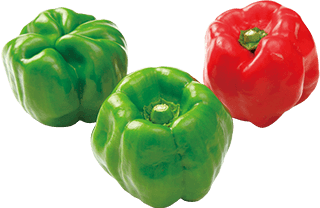
Botankosho (Bottom)(Nakano CityNagae,Shinano Townothers)
[Harvestment period: mid-July to late October]
When viewed from above, this pepper-shaped chili pepper is shaped like a button flower, and has a spicy flavor that gives off a thick, sweet flesh. In addition to being roasted whole, pepper miso, miso pickled in miso, tempura, and stewed dishes, it is also used in Yatara, a local dish of the Kitashin region, where summer vegetables and pickles are finely chopped and mixed together.
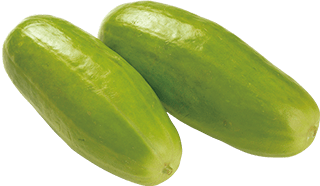
Numamegoshi melon (Numame Shirori)(Numame, Suzaka City)
[Harvestment period: July-August]
A traditional vegetable that has been cultivated for pickles since the Edo period in the Numame area of Suzaka, which is thin and thick, crisp and chewy. It is a traditional vegetable that has been cultivated for pickles since the Edo period. It is an early-growing species that is resistant to disease and easy to grow, and has a short cylindrical shape and a beautiful pale blue-white color. Perfect for pickled kasu, Nara pickled , and light pickled .
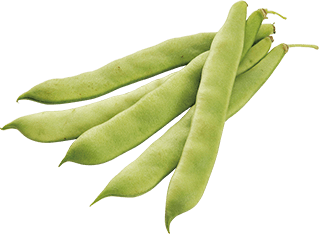
Hole(Azumino CityHotaka)
[Harvestment period: July to early November]
From the Taisho period to the early Showa periodAzumino CityGreen beans are said to have been among the vegetable seeds introduced from the United States by Katsuno Yoshigone of Hodaka. In addition to the salads, tempura and stewed dishes, bean pastes made from dried pickled vegetables and inan paste that are handed down in the Azumi Inanukai area of Matsumoto City, and when boiled, the bean paste is made delicious by the sweetness of the bean paste.
「ShinshuFor more information on "traditional vegetables," please see Nagano Prefectural Horticultural Livestock Division (026-235-7228)to contact please.
「ShinshuTraditional vegetables - When I ate them, I felt a nostalgic scenery softly ~
「ShinshuTraditional vegetables cultivation area map
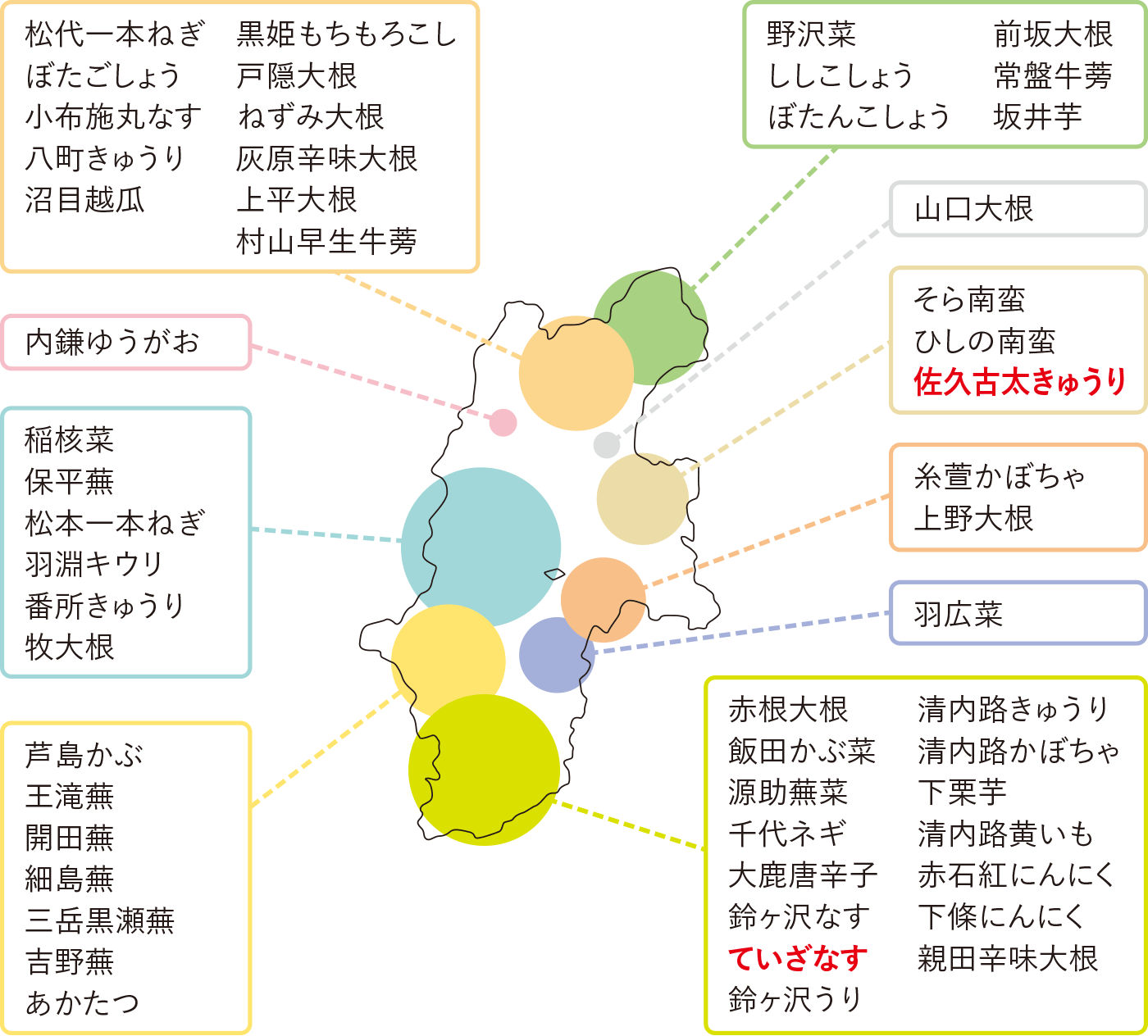
*Items certified as cultivation in traditional areas (as of R3.7.12) are listed. *Some vegetables have become widely established.
This article is information as of July 2021.
Please note that the products we carry may have changed.















